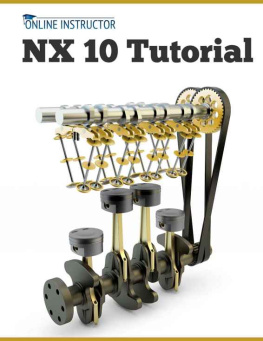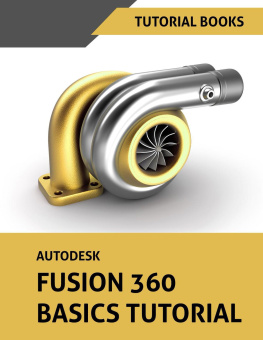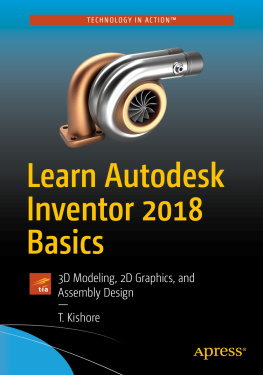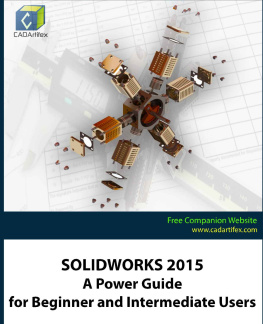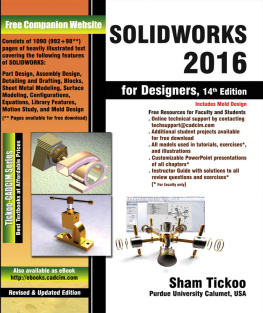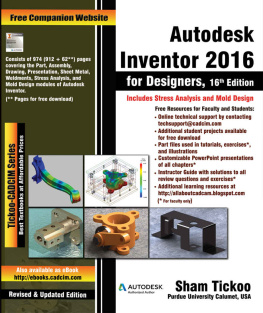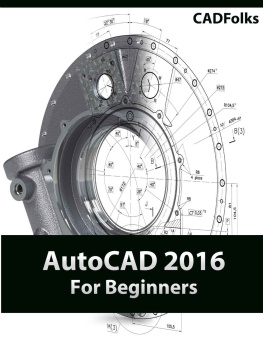NX 10 Tutorial
Online Instructor
Copyright 2015 Online Instructor
This book may not be duplicated in any way without the express written consent of the publisher, except in the form of brief excerpts or quotations for the purpose of review. The information contained herein is for the personal use of the reader and may not be incorporated in any commercial programs, other books, database, or any kind of software without written consent of the publisher. Making copies of this book or any portion for purpose other than your own is a violation of copyright laws.
Limit of Liability/Disclaimer of Warranty:
The author and publisher make no representations or warranties with respect to the accuracy or completeness of the contents of this work and specifically disclaim all warranties, including without limitation warranties of fitness for a particular purpose. The advice and strategies contained herein may not be suitable for every situation. Neither the publisher nor the author shall be liable for damages arising here from.
Trademarks:
All brand names and product names used in this book are trademarks, registered trademarks, or trade names of their respective holders. The author and publisher are not associated with any product or vendor mentioned in this book.
Contents
Introduction
NX as a topic of learning is vast, and having a wide scope. It is one of the worlds most advanced and highly integrated CAD/CAM/CAE product. NX delivers a great value to enterprises of all sizes by covering the entire range of product development. It speeds up the design process by simplifying complex product designs.
This tutorial book provides a systematic approach for users to learn NX 10. It is aimed for those with no previous experience with NX. However, users of previous versions of NX may also find this book useful for them to learn the new enhancements. The user will be guided from starting a NX 10 session to constructing parts, assemblies, and drawings. Each chapter has components explained with the help of various dialogs and screen images.
Scope of this Book
This book is written for students and engineers who are interested to learn NX 10 for designing mechanical components and assemblies, and then generate drawings.
This book provides a systematic approach for learning NX 10. The topics include Getting Started with NX 10, Basic Part Modeling, Constructing Assemblies, Constructing Drawings, Additional Modeling Tools, and Sheet Metal Modeling.
Chapter 1 introduces NX 10. The user interface, terminology, mouse functions, and shortcut keys are discussed in this chapter.
Chapter 2 takes you through the creation of your first NX model. You construct simple parts.
Chapter 3 teaches you to construct assemblies. It explains the Top-down and Bottom-up approaches for designing an assembly. You construct an assembly using the Bottom-up approach.
Chapter 4 teaches you to generate drawings of the models constructed in the earlier chapters. You will also learn to generate exploded views, and part list of an assembly.
Chapter 5: In this chapter, you will learn the tools needed to create 2D sketches.
Chapter 6: In this chapter, you will learn additional modeling tools to construct complex models.
Chapter 7: This chapter helps you to create, edit, and use expressions in your designs.
Chapter 8: introduces you to NX Sheet Metal design. You will construct a sheet metal part using the tools available in the NX Sheet Metal environment.
Chapter 9: teaches you to create an assembly using Top-down design approach.
Chapter 10: teaches you to add dimensions and annotations to your drawings.
Chapter 11: introduces you to Finite Element Analysis.
Chapter 1: Getting Started
In this chapter, you will learn some of the most commonly used features of NX. Also, you will learn about the user interface.
In NX, you construct 3D parts and use them to generate 2D drawings and 3D assemblies.
NX is Feature Based. Features are shapes that are combined to build a part. You can modify these shapes individually.

Most of the features are sketch-based. A sketch is a 2D profile and can be extruded, revolved, or swept along a path to construct features.

NX is parametric in nature . You can specify standard parameters between the elements of a part. Changing these parameters changes the size and shape of the part. For example, see the design of the body of a flange before and after modifying the parameters of its features

Starting NX
- Click the Start button on the Windows taskbar.
- Click the arrow pointing downward.
- Click Siemens NX 10.0 > NX 10.0 .
- Click the New button.
- On the New dialog, click Templates > Model .
- Click the OK button

Notice these important features of the NX window.
User Interface
Various components of the user interface are discussed next.
Quick Access Toolbar
This is located at the top left corner of the window. It consists of the commonly used commands such as Save , Undo, Redo, Copy , and so on.
File Menu
The File Menu appears when you click on the File icon located at the top left corner of the window. The File Menu consists of a list of self-explanatory menus. You can see a list of recently opened documents under the Recently Opened Parts section. You can also switch to different applications of NX.
Ribbon
A ribbon is a set of tools, which are used to perform various operations. It is divided into tabs and groups. Various tabs of the ribbon are discussed next.
Home tab
This ribbon tab contains the tools such as New , Open , and Help, and so on.

Home tab in the Model template
This ribbon tab contains the tools to construct 3D features.

View tab
This ribbon tab contains the tools to modify the display of the model and user interface.

Analysis tab
This ribbon tab has the tools to measure the objects. It also has tools to analyze the draft, curvature, and surface.

Home tab in Sketch Task environment
This ribbon tab contains all the sketch tools. It is available in a separate environment called Sketch Task environment. The Sketch Task environment is activated when you activate a Feature modeling tool and click on a planar face or Datum plane.

Next page
